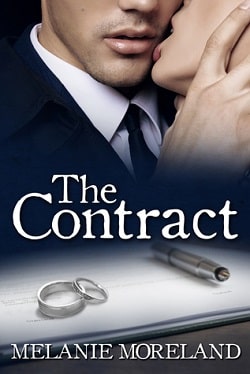“I wish I could have stopped her,” said Bell. “But, I was wondering—”
“Nope, the wire’s fine and dandy. Here, I’ll show you.”
The engineer led Bell to the giant drum around which the inch-thick steel rope was coiled in tight and orderly rows and showed him the loop that formed the end. “See, this here thimble inside the loop protects the wire from pinching. You see how it’s held its shape? And the clamps here have their saddles on the live side of the wire like they’re supposed to, and they held tight.”
“I suppose that means a link in the chain busted even though it’s not supposed to.”
The engineer shook his head. “If they ever snake that chain out of that mess down there, I’ll bet you even money it’ll be strong as the day it was born. Molybdenum alloy steel. You know what that is, son?”
Bell did but a laborer probably would not, so he shook his head. “Heard it spoke. Can’t rightly say I know what it means.”
“Alloy cooked up by French metallurgists. Much stronger than plain steel. Ideal for lifting chain. Molybdenum steel don’t fracture.”
“Then what do you reckon broke?” asked Bell.
“Hard to believe it was the shackle.”
“What shackle?”
“The swivel shackle that connects the wire to the bridle. It’s so we can hook her up easy, and it swivels to distribute the load. No, that shackle’s the culprit. Even money.”
“Do shackles break often?”
“Never! Almost never.”
“Wonder was it too small for the job?”
“No, sir! Installed it myself. Made darn sure its working load exceeded the chain’s and the wire’s. Can’t imagine how it failed.”
Bell wondered if there was some miraculous way to ask politely enough to keep the engineer talking, whether he thought that the runaway was only a dream. Then a broad-bellied coal cop swaggered out of the tipple, eyeing Bell suspiciously. “What are you two jawing about?”
The engineer was not cowed. He was a valuable mechanician who knew his place. But Isaac Bell, a lowly laborer, was supposed to kowtow, unless he was man enough to look the cop in the face, at the risk of his job, and tell him to go to hell.
Bell turned his back on him and walked down the steep slope.
“Where the hell you going? I’m talking to you.”
“They fixed the ventilators,” Bell called over his shoulder. “I’m going down with the rescue boys. You coming?”
The cop, who had no desire to enter a coal mine filled with poisonous and explosive gases, did not reply, and Bell joined the rescuers, who were dragging new lines from the power plant and wielding picks and electric drills to clear the haulageway and galleries to search for the missing doorboys.
* * *
When the last small body had been carried out and the exhausted searchers shambled up to the surface, Bell extinguished his headlamp and hid in a gallery. He watched their lights fade up the haulageway. Then he relighted his own lamp and headed deep into the empty mine on the trail of an enigma.
At no point in his investigation had he seen or heard a hint of union sabotage and now he thought he knew the reason why. Having worked weeks underground, and having just survived the mining disaster set off by the runaway, he had to question the very existence of the union saboteurs that the company had hired Van Dorn to arrest.
He did not doubt the existence of sabotage in labor disputes. Violent incidents abounded in a war between workers and owners that stretched back as far as anyone could remember. Miners had shot it out with the Coal and Iron Police before the oldest man in the mine had worked as a doorboy. Many a railroad workers’ strike had escalated from fistfights, clubbings, and shoot-outs to derailed locomotives and dynamited bridges. Many a steel mill strike had seen furnaces blown up or had their fires drawn, destroying the works when the molten metal turned solid inside the pots and ladles. Towboats and barges were set adrift, factories put to fire, telegraph wires cut, and owners’ mansions burned to the ground. Mounted police had charged like cavalry on the battlefield. Gatling guns had raked strikers’ tent cities.
But deep under the ground in a coal mine, sabotage was tantamount to suicide. Deep underground, the unionists themselves would be crushed when roofs fell. Suffocated when damps displaced air. Burned alive when gases exploded.
But before he could report that there were no union saboteurs to the Boss — Mr. Joseph Van Dorn, founder of the detective agency that bore his name — a young detective on his first case had better make absolutely sure that the runaway had been an accident. That demanded evidence.
Trust what you see, not what you’re supposed to see—the first lesson of his long apprenticeship drilled into him by veteran Van Dorns like Wish Clarke, and Mack Fulton and Walter Kisley. And repeated often, very often, by Joseph Van Dorn himself.
Bell walked down the slope to the bottom of the haulageway and passed his light over the twisted wreckage of the coal train that had smashed into the yet-to-be-dug seam at the end of the line. The car at the rear, the bucking, swaying last one he had ridden down in, had been the front car on the way up, the one to which the winch wire’s chain bridle had been attached. He found the links at either end of the chain bridle fixed to massive rings fastened to the left and right side of the frame. But the bridle, a length of chain twice as long as the width of the car, had parted right in the middle. He found no shackle. And only half of the link that would have been the middle one remained, jammed into its neighbor. When he tried to pull it out, it sliced his finger.
Sucking the blood, he inspected the sharp edge that had cut him. The fracture was in the barrel, one of the long straight sides of the link. He expected a ragged edge. What he saw was a surprise, and a mystery. Where the steel link had fractured was smooth and flat and sharp as a razor.















